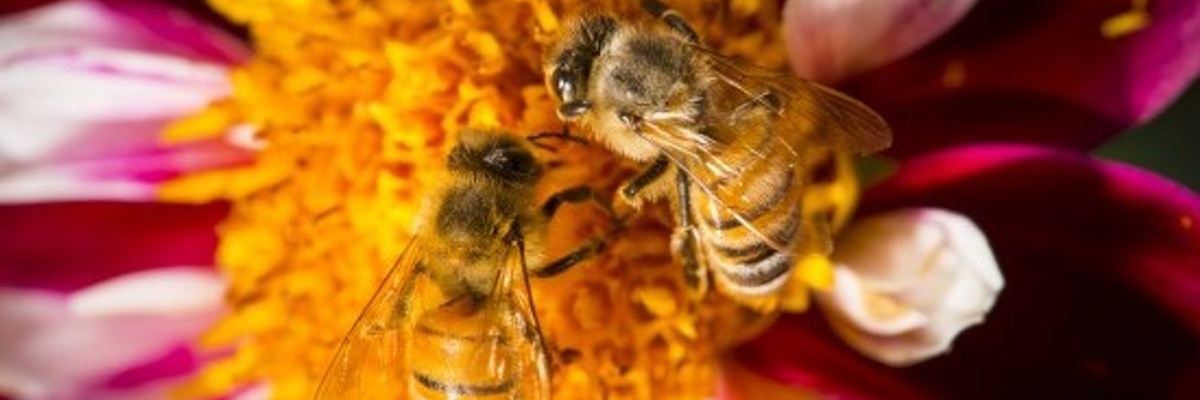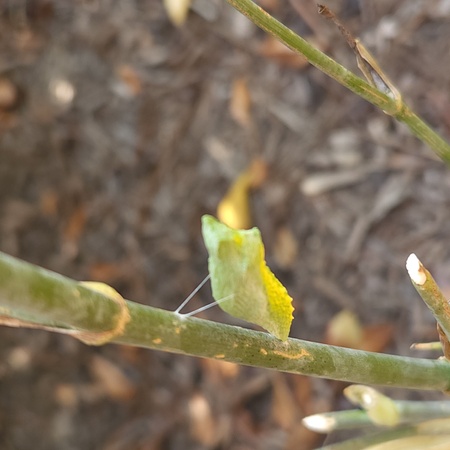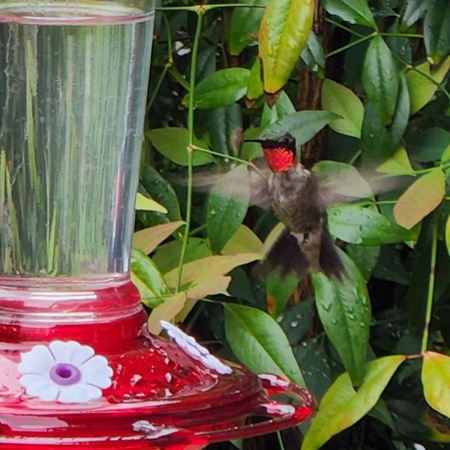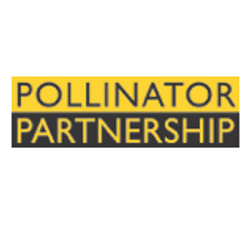

Whether you are a farmer of many acres, land manager of a large tract of land, or a gardener with a small lot, you can increase the number of pollinators in your area by making conscious choices to include plants that provide essential habitat for bees, butterflies, moths, beetles, hummingbirds, and other pollinators. Happy planting!
Whether you are a farmer of many acres, land manager of a large tract of land, or a gardener with a small lot, you can increase the number of pollinators in your area by making conscious choices to include plants that provide essential habitat for bees, butterflies, moths, beetles, hummingbirds, and other pollinators. Happy planting!
October 1- I was chatting on-line with a gardener in north Georgia who counted seventeen hummingbirds in her backyard on Wednesday all hoping for a turn at her feeder. Of course there were fights and she stepped in to protect a male who was knocked to the ground. Hummingbirds can't walk (no kidding, their legs aren't strong enough to walk, they can only perch) so a stunned hummer lying on the grass is quite vulnerable.
Research tracking banded hummingbirds has shown that they follow the same migratory route each fall, even stopping at the same places to feed and remain over night. In spring, they follow the reverse course, returning to their same territory. The Nokesville library may become a hummingbird way station when the little guys become familiar with it.
The female who hung around my deck and feeder all summer is still with us and still taunting my good natured cat. Perhaps cooler nights will remind her to get moving. My husband noticed that when she sticks her bill into a salvia flower pollen sticks to her forehead. Then when she goes to the next salvia flower presumably some of that pollen rubs off. Hummingbirds are pollinators so we can talk about them on this blog LOL.
September 28- In the garden this week, contractors are installing a storage shed in the backyard. It's being placed on a grassy area and won't impact the pollinator garden.
With hurricane Ian inbound, I drained the rain barrel and left the tap open. Fall rain means it's planting season! Fall is an excellent time to plant trees, shrubs and potted perennials. Fall planting gives them eight months to root in before hot weather. When selecting new plants for your landscape, please choose native plants to support our local fauna.
The plight of honeybees has been widely publicized. My favorite bee, the American bumblebee (bombus pennsylvanicus) is also in trouble. It is currently under consideration by the US Fish & Wildlife Service for inclusion on the Endangered Species List. American bumblebees have completely vanished from eight states (ME, NH, RI, VT, ID, ND, OR and WY). In nineteen other states their population has dropped by more than 50%. The plunge in bumblebee populations has been attributed to habitat loss and pesticide use.
A garden would feel desolate without chubby, fuzzy bumblebees. When you visit fall plant sales, please choose native perennials like coneflowers and agastache to help the bumbles.
September 19- In the garden this week, it's time to clean out birdhouses for fall. We expect birds to migrate, but in the Tidewater the cavity nesting birds that use our bluebird houses remain with us year 'round. In winter, several birds of the same species huddle together inside a birdhouse on cold nights. Their combined body heat warms the box and they stay warm. They don't use any sort of nesting material, they just want an empty box. I opened the library birdhouse today and removed the old nest.
Watching the birds in my backyard over the weekend, I noticed them squabbling over the birdhouses: the wren family wants this one and the chickadee tribe claims that one but the tyrannical house sparrows lay claim to them all. The bluebirds are least aggressive so they get which ever box is left over.
In other bird news, the number of hummingbirds is dropping. Only one has been hanging around my deck and the library bird feeders aren't being drained. Our resident birds are moving on. Hummingbirds don't flock, each bird travels solo including the juveniles. Little guys who've never migrated before have to find their way to Central America alone. I'm going to keep my feeder up until October for the transients passing through.
September 14- Virginia has a blessedly long growing season and annuals can get pretty leggy by September. Today I trimmed back the cuphea and salvia growing in pots in front. They each received a dose of time release fertilizer to encourage quick regrowth. Their haircuts look drastic but I promise they will fill out and bloom again in no time.
In the back garden, there are a couple tiny new swallowtail caterpillars. Their older cousins have metamorphosed and flown away.
September 7- In the pollinator (back) garden this week the yarrow (achillea Coronation Gold) is blooming AGAIN with large plates of gold made even brighter by the dark rainy day. That plant has been in bloom since early May! The coneflowers (echinacea purpurea Magnus) also have a few new blossoms to show their appreciation of fall rain. The asters (symphiotricum aroma October Skies) have grown into 3x3 mounds resembling shrubs: they're clearly very happy here. The mountain mint (pycnanthemum muticum) just keeps churning out flowers and feeding bees like the Energizer Bunny.
In the front garden, the asters around the female gingko have sent up flower stalks and teeny buds are visible. They will be stopping traffic in another week or two. The phyostegia under the crabapple continues to bloom in a lovely clear pink. I have a large patch of phyostegia at home and the hummingbirds seem to especially enjoy it.
Speaking of hummingbirds, the adult males have departed (Elvis has left the building). The females and juveniles will be around for a few more weeks gaining weight before their migration. Thank you to our library staff for cleaning and refilling the feeders. The feeder by the bird bath is completely drained by the hummers each week!
August 31- This week in the garden, the phyostegia is blooming (front yard under the crab apple). Phyostegia virginiana aka obedient plant is a Virginia native. It's nickname is obedient plant because the individual little flowers on the spike can be pushed into other positions and they stay in place. One of my gardener friends calls it disobedient plant because it spreads rampantly when happy. Ours has begun to spread... which is fine since the bees love it.
In the backyard pollinator garden, the big story are the swallowtail caterpillars. This week a couple of fat cats remain and one chrysalis is attached to a stem. The other guys have dispersed. I saw a chrysalis in the milkweed but I'm not knowledgeable enough to tell whether it's a swallowtail or monarch but either is great.



August 24- Our second group of monarch caterpillars have dispersed into the garden to pupate. We humans would like to watch them hatch from their chrysalises and fly away south but they feel safer pupating hidden among the foliage where we can't see them. It amazes me how quickly they develop. Vaya con Dios little guys!
Meanwhile, our fourth group of swallowtail caterpillars are munching fennel. This is a large group, I gave up trying to count them. Comparing swallowtails and monarchs, it seems pretty obvious that monarchs are endangered. We only raised half a dozen monarchs this year but each one is important and we'll keep trying.
There are still a crazy number of hummingbirds visiting the feeders. They're quite fresh, ignoring humans as they zip around. It seems incredible that those tiny birds fly across the Gulf of Mexico in their migration.

August 3- Although the summer has been HOT, Nokesville has been blessed with frequent rain and the lawn is green. Can it really be August if the grass hasn't turned brown? The pollinator garden is loving the heat and rain; it continues to bloom heavily.
There is a new addition to the garden this week... a second hummingbird feeder. Hummingbirds are feisty little guys who spend their lives fighting over limited resources. They can't share or take turns at the feeder. It's amazing to watch their aerial combat because they maneuver so well but they expend a lot of energy fighting and nobody gets to feed. Our wonderful library staff came to the rescue by bringing in a second and third feeder and shepherd's crooks. Now one feeder is in the front yard by the bay window and one is in the backyard by the employee door and one is near the book drop. The birds can feed without seeing each other and peace is restored.

August 17- Signs of fall are showing in the garden this week: the brown central cones of the coneflowers have grown heavy with ripe seeds causing the plants to flop over. Finches who perch on the cones to eat the seeds add to the flop. Milkweed seeds are floating away on the breeze and the foliage is turning red. Three monarch caterpillars are munching on milkweed. This is the "super generation" that will migrate to Mexico.
Another migration is beginning, male hummingbirds are departing Canada and New England coming our way. The adult males go first then females and juveniles follow a month later. In anticipation of the migrants, Rebecca donated a third hummingbird feeder. Each is located on a different side of the building so three birds can feed simultaneously.



August 10- For the third time this summer, our fennel patch is home to swallowtail butterfly caterpillars! Today three little guys are munching away.
The October Skies asters and Iron Butterfly vernonia are beginning to bloom. The aster flowers are slowly opening and tiny bees are already inside the partially opened flowers.
The milkweed has gone to seed: the seedheads are opening to release silky parachutes with small black seeds attached. Help yourself to seeds if you'd like to start a patch of milkweed at home but remember that milkweed seed requires cold stratification. If you keep the seeds warm and dry indoors this winter then plant them in spring, they won't grow. They need to be outdoors cold and wet over the winter to germinate.




July 20- Today in the garden, the rain barrel had overflowed and washed mulch onto the parking lot. A patron explained that Nokesville received an inch of rain in fifteen minutes the other day. That's quite a downpour! It's wonderful to have a green lawn in late July.
In the pollinator garden, two swallowtail caterpillars are munching fennel. They look like two little boys having an eating contest.
A cool new plant in bloom this week is lobelia siphilitica aka great blue lobelia. It's a native plant that grows in part shade and damp soil. Bees and hummingbirds love it. The epithet "siphilitica" was given to this lovely flower because colonial Americans thought the native Americans used lobelia to treat social diseases. No, they were mistaken. It's a beautiful plant and hopefully it will naturalize under the crab apple tree.
The bees gave me a surprise today: plenty of bees are hanging out in the pollinator garden as usual but there are also a large number of bees on the crape myrtle tree by the entrance. I don't think of crape myrtles as pollinator plants but our bees do.


We finally spotted our first Monarch today! Hopefully we will see a few more in the coming days and they will deposit some eggs on our milkweed.

I've been obsessively checking my monarch cats multiple times per day. Last night they were huge but still eating. This morning the cats have disappeared (they disperse into the surrounding vegetation before forming their chrysalis) leaving a tattered patch of milkweed. Just a few leaves remain at the bottom of the plants. A casual visitor would wonder why I grow such ugly plants.
The patch of swamp milkweed in my personal garden now hosts ten monarch caterpillars. It's funny how they arrive right on time in late July/early August.
Yay!!! Never mind that the monarch's sitting on an aster in the photo, she will find the milkweed. I was out walking this morning and spoke with a Lake Ridge lady who has a stand of two dozen pristine milkweed plants in her front yard. She claims that she isn't nervous yet, monarchs never lay eggs on her milkweed before August. But you know she's just dying to see caterpillars...
July 6- Today two high school students worked in the garden to earn community service hours. Joella and Hussan collected a five gallon bucket of gingko fruit from the patio and garden beds in the front yard, watered to drain the rain barrel before the upcoming storms and pulled dandelions from the lawn. Thank you!!!
Despite the recent hot and dry weather, the pollinator garden looks beautiful. Choosing tough native plants is paying off for us. A large number of cabbage white butterflies were feeding on the blue agastache blooms. Do butterflies realize how lovely they are?
I didn't see any monarch caterpillars today - the watch continues...

July 13- The severe thunderstorms that blew through Nokesville on Tuesday night caused little damage to our garden. The rain barrel overflowed and mulch washed into the parking lot but that's not a big deal compared to our neighbors with fallen trees and no electricity.
Along the back tree line, the damp conditions drew out a box turtle. She was beside the raspberry bushes so I picked a couple and placed them on the ground in front of her. A turtle with a taste for raspberries can't very well pick her own. There's a nice story in the Washington Post this week about a man who befriends a box turtle by feeding him strawberries. Tom and Stumpy have been pals for three decades now based on a shared love of strawberries. Our library turtle refused my raspberry offering :(
Our birdhouse remains empty. The bluebird trail monitors at Rippon Lodge tell me that local songbirds are on their second clutch now. When the monitors open the birdhouses to check the nests, they are counting hatchlings this week. Songbirds nest three times per season here so hopefully the library will get a nest in the third round.
The hummingbird feeder has attracted a customer. Of course we'd love to see great clouds of hummingbirds buzzing around our feeder but it's nice to have a resident hummer to add life to the front garden. The last daylilies are finishing their bloom cycle and going summer dormant so there isn't much color in the front garden now. Since that garden contains two large gingko trees, the flowers and front lawn are competing for water against tree roots. When trees and flowers or lawn compete for water, the trees always win. Walking around the library building to the ChangeX pollinator garden in back is a shock to the senses: the pollinator garden is a mass of vibrant blooms alive with bees. With no tree competition and an occasional watering by library staff, the pollinator garden remains in full bloom all summer. Comparing the two gardens highlights the value of pocket pollinator gardens in sustaining our pollinators during the dry high summer period.

A box turtle has been sitting next to the foundation of my house in a spot that is always shady. The turtle is partially dug into the soil. When it hadn't moved in two days, I picked it up to see if it was injured. Nope, no obvious injuries so I put it back. Several more days passed and I continued to worry about the turtle. Googling box turtles led me to multiple articles on how to keep turtles as pets which enraged me. A wild animal shouldn't be captured and sentenced to a life in solitary confinement in a small aquarium. So wrong. But I did find one article that explained my turtle's behavior - turtles enter a state similar to hibernation in very hot weather. It's been six days and the turtle is still chillin' in the shade next to an air conditioned basement.
6 Participants
